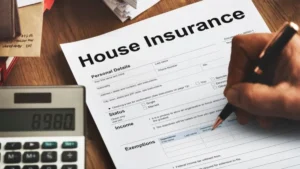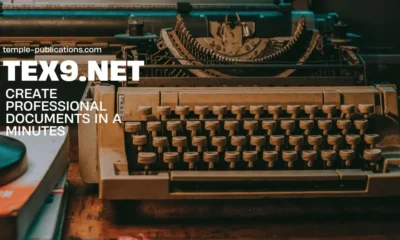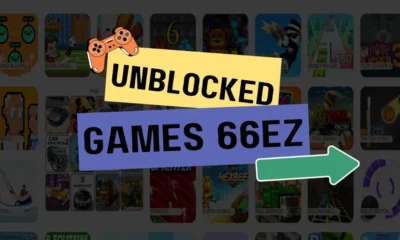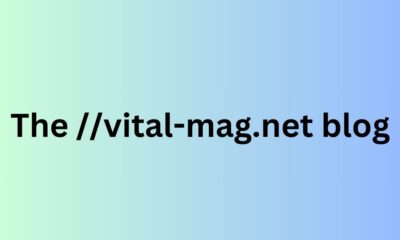INSURANCE
Openhouseperth.net Insurance: Perth’s Trusted Insurance Choice

Openhouseperth.net Insurance is an Australian insurance company that is based in Perth and deals mainly in home insurance for homeowners/ landlords, and tenants. The insurance solutions provided by the company include different types of insurance services that are tailored to the client’s needs to protect their property and personal belongings from fire, theft, natural disasters, legal actions against them, and others. It has a rich list of coverage options, with high attention paid to the customer service that can be provided. net Insurance is an established company operating in the local market and provides client-oriented solutions for its customers.
Why Choose Openhouseperth.net Insurance?
Openhouseperth. net Insurance has, therefore, established a strong market reputation in Perth as an insurer’s broker whose primary focus is to help its clients find insurance solutions that meet their specific needs. Whether you’re a homeowner, landlord, or tenant, you can be sure to work with their team of experts to give you the best policy. They stand out by providing the following:
- Personalized customer service: All the customers are provided with one-on-one consulting for the development of policies that suit their circumstances.
- Comprehensive coverage options: Old Perth labor heritage of the open house. net provides for all forms of risk-inclusive physical such as natural disasters or man-made ones, such as theft or fire, among others.
- Flexible policies: They have flexible policies and extra coverage options to meet a wide variety of Housing Australia needs.
- Affordable pricing: Pricing policies are affordable to enable clients to achieve maximum value without compromising on basic insurance.

Types of Home Insurance Policies Offered
They offered many types of Insurance. Some are given below:
- Homeowner Insurance
- Landlord Insurance
- Condo Owner’s Insurance
- Renters Insurance
Homeowner Insurance
Its portfolio is enriched by the available homeowner insurance policies meant to address most of the threats that exist concerning a homeowner, including fire, theft, and water damage among others. Policies also cover natural disasters and liability matters making it possible for property owners to have a worrying-free experience. Flexible coverages enable homeowners to add or exclude coverage as required, the additions may be for valuable items in the house apart from the principal dwelling, other structures within the compounds, or natural perils that are deemed a potential threat.
Landlord Insurance
In landlord insurance, Openhouseperth.net Insurance offers a coverage solution for rental units against a myriad of perils. This covers physical loss or damage to the property, inability to receive rent from a tenant occasioned by an event beyond the homeowner’s control, and legal liability to the tenant in case of an incident in the premises owned by the homeowner. Their landlord policies make it possible for owners of property to safeguard their investments when dealing with issues concerning their tenants.
Condo Owner’s Insurance
Owners also insure their condos through condo owner’s insurance which even covers personal property as well as the structure of the condo. This type of insurance is meant to complement any policy that the condominium association provides to the owners of the condos, and it includes protection against further risks such as interior damage or theft. Accidental or any sort of mishap that may occur within the condo is also covered in terms of liability.
Renters Insurance
Although many renters believe that they do not need any insurance since their landlords are responsible for compensating for any harm, this is not the case since renters insurance can cater for the replacement of any stolen, burnt, or damaged property in the rental house. Its renter’s policies are relatively cheap while offering great coverage for personal property, for the company’s liability, and for extra living expenses if the rented area becomes uninhabitable in the light of an insurance event. Different policies can be designed depending on the value that a renter has put into their property, hence this is one of the best options for the tenants in Perth.

Comprehensive Coverage for Natural Disasters
Natural disasters are always a possibility thanks to Australia’s volatile climate, which is why homeowners, landlords, and renters alike need to have insurance coverage. Openhouseperth.Net Insurance offers policies that act as a cover for eventualities like floods, earthquakes, and storms among others. To the people residing in the areas that are experiencing bushfire activities, the company extends its coverage which will enable the people living in such areas to deal with the risks of dealing with the disaster.
Protection Against Theft
Home burglaries can be devastating, but with theft protection coverage from Openhouseperth.net, you can rest assured knowing your home is secure. Their policies cover the cost of replacing stolen items and provide additional security options, such as discounts for homes equipped with alarm systems or security cameras. If you fall victim to theft, Openhouseperth.net Insurance provides quick support to get your home back to normal.
Liability Coverage
Where there is a likelihood of an accident happening then, liability coverage makes sure that you cannot be made to bear the brunt of a legal aftermath. Its benefit features best in situations where a guest falls sick or gets injured at your property, or in cases where you are held legally accountable to pay for damages to another person’s property. Liability insurance is very important to all homeowners and landlords because it covers all the risks that may occur.
Customizable Coverage Plans
Openhouseperth.net Insurance understands that no two homes are alike, and offers customizable insurance plans to suit your unique needs. You can add additional coverage for:
- High-value items: Jewelry, art, and collectibles often require additional coverage beyond standard policy limits.
- Home businesses: Coverage for equipment and liability associated with operating a business from home.
- Second homes or vacation properties: Extended coverage for additional properties, ensuring all your investments are protected.
- Additional natural disaster risks: Tailored protection for specific natural disasters based on your location.

Professional Team and Customer Support
At Openhouseperth.net Insurance, the customer is always the king. The team of professional insurance advisors makes efforts to explain to clients about the coverage offered by different policies so that clients can select the right one. I noticed that clients are happy with the customer services provided to them, especially when making a complaint, seeking clarification on policy matters, or seeking expert advice on policy options.
How to Get a Quote from Openhouseperth.net Insurance
Getting a quote from Openhouseperth.net Insurance is a quick and straightforward process. Their user-friendly website allows potential customers to:
- Enter information about their property, including its location, size, and type.
- Select the type of coverage they need, such as homeowner, landlord, or renters insurance.
- Customize their policy by adding specific coverage for high-value items or natural disasters.
Claims Process
In case of an occurrence of an incident, it has easy-to-follow claims that assist in filing a claim and be provided with the required assistance. There is an option of filing for claims online or through calling the company and the claims department quickly responds to the issues raised. It generally involves the submission of supporting documents, setting of timetable for inspections where necessary, and then issuance of reimbursement or service.
Legal and Regulatory Compliance
Openhouseperth.net Insurance ensures full compliance with local regulations governing insurance policies. Homeowners, landlords, and renters must meet certain legal obligations, and Openhouseperth.net helps policyholders stay informed about changes to local laws. Their policies are designed to meet or exceed these requirements, offering peace of mind to customers.
Conclusion
When deciding to take a home insurance company within the Perth region, openhouseperth.net Insurance could be considered the best option among the proposals presented. They are simply one of the most customer-oriented, offering extensive coverage and staffed by a professional team who can ensure the right coverage for your home, rental, or condominium.
-

 BIOGRAPHY6 months ago
BIOGRAPHY6 months agoBehind the Scenes with Sandra Orlow: An Exclusive Interview
-

 HOME1 year ago
HOME1 year agoDiscovering Insights: A Deep Dive into the //vital-mag.net blog
-

 HOME1 year ago
HOME1 year agoSifangds in Action: Real-Life Applications and Success Stories
-

 BIOGRAPHY1 year ago
BIOGRAPHY1 year agoThe Woman Behind the Comedian: Meet Andrew Santino Wife




























